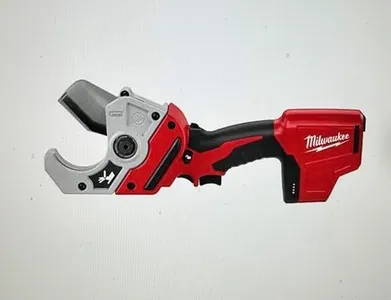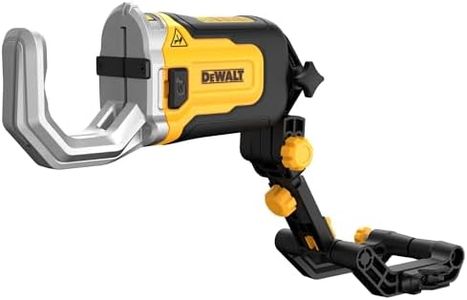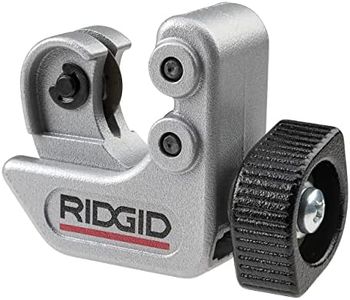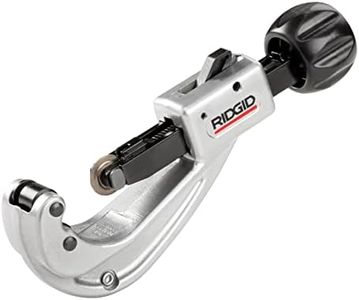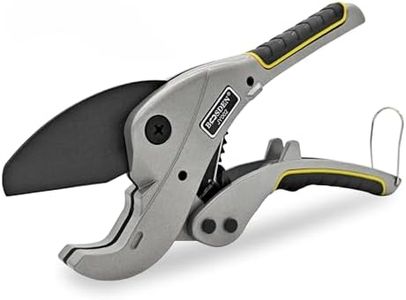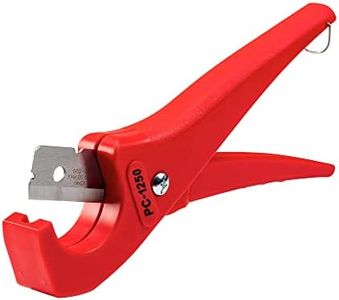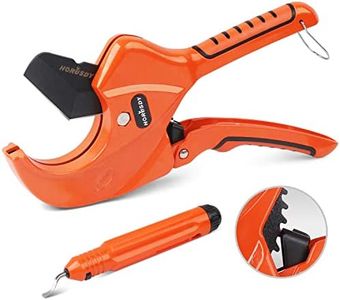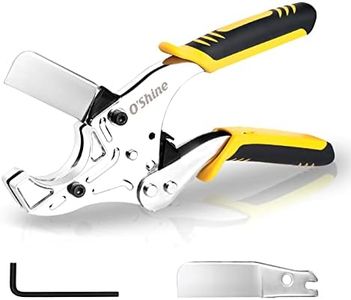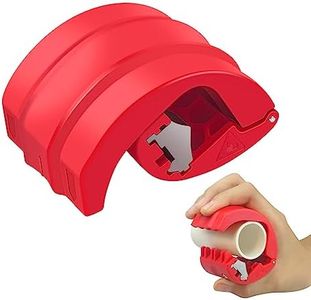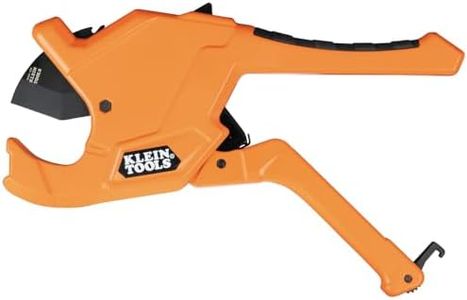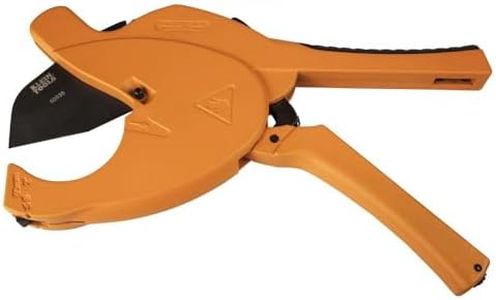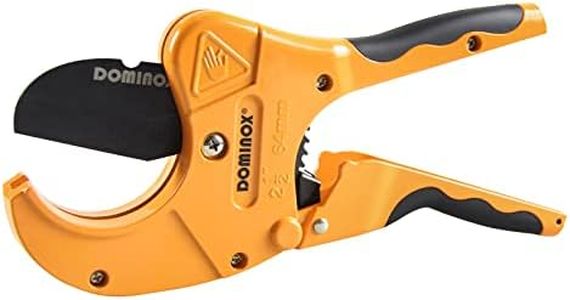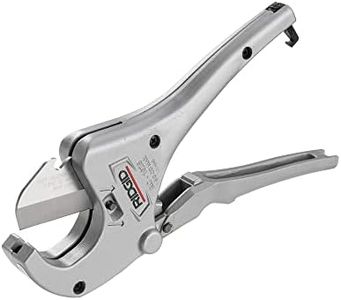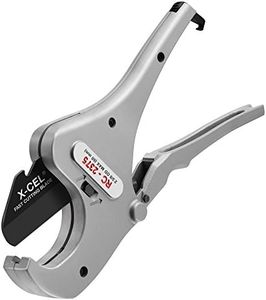We Use CookiesWe use cookies to enhance the security, performance,
functionality and for analytical and promotional activities. By continuing to browse this site you
are agreeing to our privacy policy
10 Best Pvc Pipe Cutters
From leading brands and best sellers available on the web.Buying Guide for the Best Pvc Pipe Cutters
Choosing the right PVC pipe cutter is essential for anyone working with plumbing or DIY projects involving PVC piping. The tool you select can make the job easier, faster, and yield cleaner results. Instead of just grabbing the first cutter you see, it’s important to understand the main differences between types and specs so you get one that fits your projects and makes cutting safe and efficient.Cutting Capacity (Pipe Size Range)Cutting capacity refers to the diameter of pipe a cutter can handle. This is crucial because a cutter that’s too small won’t fit the pipe, while an oversized cutter can be awkward for smaller jobs. Common segments you’ll find are cutters designed for small pipes (up to 1 inch), medium pipes (1 to 2 inches), and large pipes (above 2 inches). To pick the right capacity, first determine the largest pipe you will typically cut, then choose a cutter that fits that size comfortably.
Blade Type (Style)The blade type can affect both how cleanly the cutter slices and how easy it is to use. There are ratcheting cutters (which work in steps and offer more control for thick pipes), scissor-style cutters (with a single action suitable for smaller pipes), and rotary-style cutters (that spin around the pipe for even cuts, often used for thin-walled or specialty pipes). For quick work on standard household pipes, a scissor or ratcheting style is best. If you're working with thicker or tough pipes, ratcheting is easier on your hands and gives a more controlled cut.
Build Quality and MaterialsThe material indicates how durable and sturdy the cutter is. Common materials are steel (robust and long-lasting), aluminum (lighter but still strong), and sometimes plastic (best for light or occasional use). Stronger materials mean the cutter will last longer, especially under frequent or heavy use. For regular or professional-level projects, a mostly steel cutter is advisable, while light usage might be fine with an aluminum or reinforced plastic option.
Ergonomics (Handle Design and Comfort)Ergonomics involves how comfortable and easy the tool is to hold and operate. Look for features such as padded or contoured handles which help reduce strain, especially if you’ll be making multiple cuts. Larger cutters may have two-handed designs for leverage. If you have smaller hands, test if the grip feels too big or awkward. Consider your own comfort and strength—if you expect to cut lots of pipes, go for the cutter that feels best in your hand.
Blade Replaceability and MaintenanceSome cutters offer replaceable blades, which makes them last much longer and stay safer to use, as dull blades can cause dangerous slips or poor cuts. Others are single-piece, so when the blade wears out, the whole tool needs replacing. It's smart to choose a model with easy blade replacement if you plan on heavy use. Check if the cutter can be taken apart for cleaning as well; this is important to prevent build-up and keep cuts smooth.
Safety FeaturesSafety features, like blade locks, help keep the tool safely closed when not in use and prevent accidental cuts. Some cutters have double-locking systems, or spring-loaded handles that snap closed for storage. If you work in a space where others might access your tools, or if you have children around, strong safety features are a good priority. Always check how the lock works and if it’s strong enough for reliable storage.
